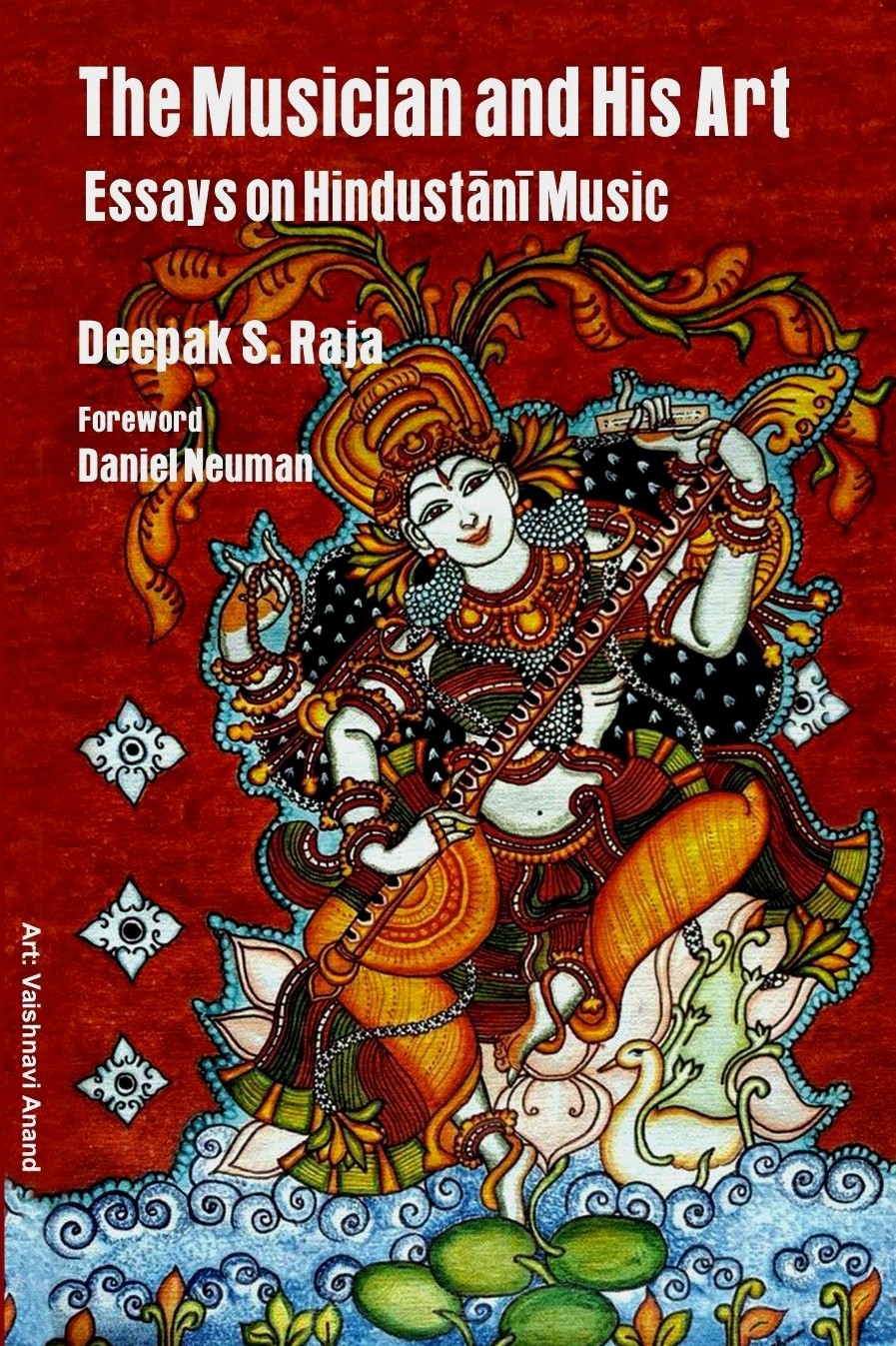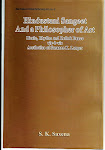Question: Ustad Enayet Khan was known for his mastery over Khamaj. But, had Imdad Khan, before him, also worked on Khamaj ?
Answer: Imdad Khan was best known for his Puriya, Yaman and Kafi. According to legend, once he played a Hori (raga Kafi, associated with the festival of holi, the festival of colours) so brilliantly in Nepal, that there was virtually a shower of saffron coloured powder from the heavens.
Question: Which ragas will people remember Ustad Enayet Khan by ?
Answer: Bhairav, Bageshri, Piloo, Khamaj, Kafi, Tilak Kamod, Bihari, Yaman, Puriya -- well, Puriya and Yaman happen to be steady pillars of our gharana's music.
Question: What are your views on your own forte' ? Which are the ragas which, you feel, you have charged with the entire power of your soul ?
Answer: I don't yet have the confidence to think on these lines because whatever I play is borrowed from the music of the giants I have heard. Maybe, I have built some kind of edifice by assembling bricks made by others. But, what is the real worth of this achievement ?
I try to give each raga the same quality of effort, spending at least two weeks preparing every raga for a concert. By the third or fourth day, the raga starts revealing its deepest secrets to me. By the time I am ready to go on stage, I feel the same degree of intimacy with any raga.
Question: Some of your ragas have a very special appeal for us. But, we might fail to notice when, and in which ragas, you approach a state of ecstatic involvement.
Answer: If you wish to look at it this way, I am born on Janmashtami (the birth-date of Lord Krishna, one of the ten incarnations of Lord Vishnu, the Preserver of the universe). Therefore, judging from the constellation under which I was born, I ought to possess the characteristics of Lord Krishna (a divine cassanova, an astute politician, and a worldly philosopher).
As a supplicant before a deity, I am immensely attracted to Bhairav (Lord Shiva, the destroyer of the universe, the eternal ascetic who presides over the occult sciences, music and dance). And, as a lover, I am obsessed with Bhairavi (Godess Parvati, Lord Shiva's divine consort, High Priestess of the Shakti cult). How ironical this is (considering the contrasting images of Krishna on the one hand and Shiva and Parvati on the other)!
Question: Bhairav and Bhairavi, as Shiva (Male power) and Shakti (Female Power) are two facets of the same spiritual entity, are'nt they ?
Answer: Yes, but Bhairav is awesome; Bhairavi is compelling. The average Hindu is conditioned by the caricature of Bhairav (Lord Shiva, as portrayed in the temples and in popular art). I wish I, a devout Moslem, could describe to him my vision of Bahirav's infinite form and awesome power! I would say the same for Bhairavi (Parvati). How many different facets of her persona I have experienced !
Oh Allah ! By how many different names, and in how many different forms, you manifest yourself to the seeker! It is we who give You different names, according to our (limited) capacity to understand You. All of them are names in praise of Your Glory. You are masculine; You are also feminine. You are the Lover; You are also the Beloved. You are the Ascetic; and you are also the Emperor.
Sitting in this room, you and I talk glibly about my recording of one raga, or another recording of another raga, as landmarks. But, all this reflects our limited understanding. Nothing limits Him (the Almighty) who inspires all this. Who, amongst mortals, has yet measured the heights to which He can elevate man's endeavours ?
It is interesting that, when Vilayat Khan talks about the excellence achieved by his ancestors, ragas are merely ragas. But, the moment he starts talking about his own music, the conversation isn't about music at all. It is about the mythical entities, Bhairav and Bhairavi, who inhabit a world beyond music.
In these comments, the Ustad demonstrates the powerful hold of the Hindu cult of Shakti (Female Divinity) over the mind of Bengal (Bengal includes the Indian state of West Bengal and present-day Bangla Desh) transcending the barriers of religion.
The Ustad handles the apparent incongruity of himself, a Moslem, obsessed by a Hindu deity with total innocence. He is responding to an archetype pregnant with immense appeal within the culture. In explaining this vision verbally, he swings effortlessly between Hindu and Islamic ideas, emphasising the irrelevance of religion to man's artistic and spiritual life.
The melodic exploration of Bhairavi has, indeed, been a very significant facet of his life's work. Any avid follower of the Ustad's career, or collector of his recordings, will confirm that Vilayat Khan has performed Bhairavi more frequently, and in more varied treatments, than any other raga. If you have heard a lot of Vilayat Khan, you have certainly heard enough of Bhairavi to know every one of his phrases. Yet, audiences never seem to tire of Vilayat Khan's Bhairavi. This is because he never seemed to run out of fresh ideas for courting his mythical beloved.
(c) India Archive Music Ltd. New York. The finest recordings of Ustad Vilayat Khan's Bhairavi have been produced by India Archive Music. IndiaArcMu@aol.com
Answer: Imdad Khan was best known for his Puriya, Yaman and Kafi. According to legend, once he played a Hori (raga Kafi, associated with the festival of holi, the festival of colours) so brilliantly in Nepal, that there was virtually a shower of saffron coloured powder from the heavens.
Question: Which ragas will people remember Ustad Enayet Khan by ?
Answer: Bhairav, Bageshri, Piloo, Khamaj, Kafi, Tilak Kamod, Bihari, Yaman, Puriya -- well, Puriya and Yaman happen to be steady pillars of our gharana's music.
Question: What are your views on your own forte' ? Which are the ragas which, you feel, you have charged with the entire power of your soul ?
Answer: I don't yet have the confidence to think on these lines because whatever I play is borrowed from the music of the giants I have heard. Maybe, I have built some kind of edifice by assembling bricks made by others. But, what is the real worth of this achievement ?
I try to give each raga the same quality of effort, spending at least two weeks preparing every raga for a concert. By the third or fourth day, the raga starts revealing its deepest secrets to me. By the time I am ready to go on stage, I feel the same degree of intimacy with any raga.
Question: Some of your ragas have a very special appeal for us. But, we might fail to notice when, and in which ragas, you approach a state of ecstatic involvement.
Answer: If you wish to look at it this way, I am born on Janmashtami (the birth-date of Lord Krishna, one of the ten incarnations of Lord Vishnu, the Preserver of the universe). Therefore, judging from the constellation under which I was born, I ought to possess the characteristics of Lord Krishna (a divine cassanova, an astute politician, and a worldly philosopher).
As a supplicant before a deity, I am immensely attracted to Bhairav (Lord Shiva, the destroyer of the universe, the eternal ascetic who presides over the occult sciences, music and dance). And, as a lover, I am obsessed with Bhairavi (Godess Parvati, Lord Shiva's divine consort, High Priestess of the Shakti cult). How ironical this is (considering the contrasting images of Krishna on the one hand and Shiva and Parvati on the other)!
Question: Bhairav and Bhairavi, as Shiva (Male power) and Shakti (Female Power) are two facets of the same spiritual entity, are'nt they ?
Answer: Yes, but Bhairav is awesome; Bhairavi is compelling. The average Hindu is conditioned by the caricature of Bhairav (Lord Shiva, as portrayed in the temples and in popular art). I wish I, a devout Moslem, could describe to him my vision of Bahirav's infinite form and awesome power! I would say the same for Bhairavi (Parvati). How many different facets of her persona I have experienced !
Oh Allah ! By how many different names, and in how many different forms, you manifest yourself to the seeker! It is we who give You different names, according to our (limited) capacity to understand You. All of them are names in praise of Your Glory. You are masculine; You are also feminine. You are the Lover; You are also the Beloved. You are the Ascetic; and you are also the Emperor.
Sitting in this room, you and I talk glibly about my recording of one raga, or another recording of another raga, as landmarks. But, all this reflects our limited understanding. Nothing limits Him (the Almighty) who inspires all this. Who, amongst mortals, has yet measured the heights to which He can elevate man's endeavours ?
It is interesting that, when Vilayat Khan talks about the excellence achieved by his ancestors, ragas are merely ragas. But, the moment he starts talking about his own music, the conversation isn't about music at all. It is about the mythical entities, Bhairav and Bhairavi, who inhabit a world beyond music.
In these comments, the Ustad demonstrates the powerful hold of the Hindu cult of Shakti (Female Divinity) over the mind of Bengal (Bengal includes the Indian state of West Bengal and present-day Bangla Desh) transcending the barriers of religion.
The Ustad handles the apparent incongruity of himself, a Moslem, obsessed by a Hindu deity with total innocence. He is responding to an archetype pregnant with immense appeal within the culture. In explaining this vision verbally, he swings effortlessly between Hindu and Islamic ideas, emphasising the irrelevance of religion to man's artistic and spiritual life.
The melodic exploration of Bhairavi has, indeed, been a very significant facet of his life's work. Any avid follower of the Ustad's career, or collector of his recordings, will confirm that Vilayat Khan has performed Bhairavi more frequently, and in more varied treatments, than any other raga. If you have heard a lot of Vilayat Khan, you have certainly heard enough of Bhairavi to know every one of his phrases. Yet, audiences never seem to tire of Vilayat Khan's Bhairavi. This is because he never seemed to run out of fresh ideas for courting his mythical beloved.
(c) India Archive Music Ltd. New York. The finest recordings of Ustad Vilayat Khan's Bhairavi have been produced by India Archive Music. IndiaArcMu@aol.com





No comments:
Post a Comment